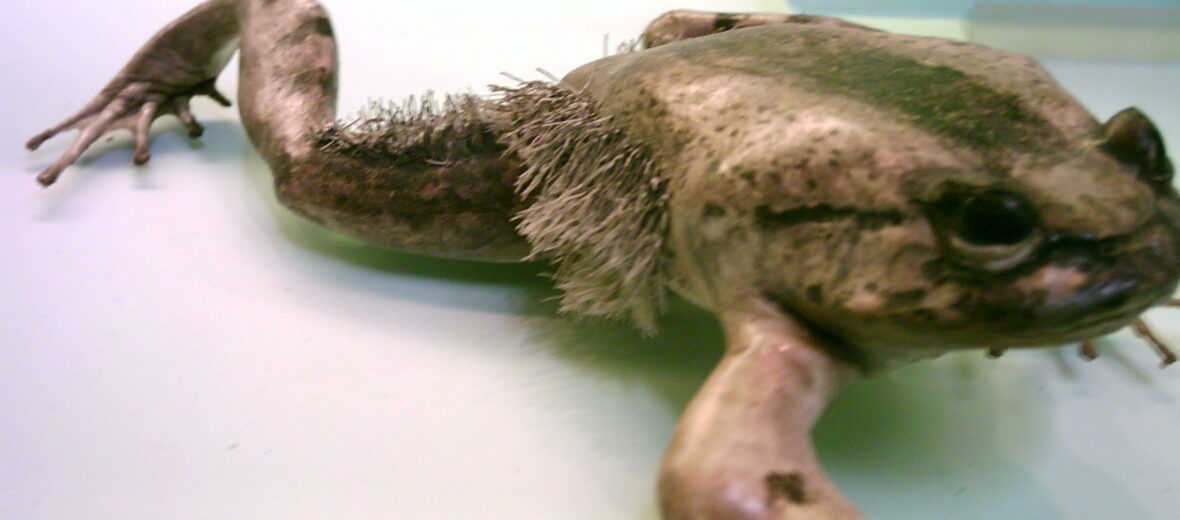
The hairy frog, aka the Wolverine frog, or horror frog, hails from Democratic Republic of the Congo, Cameroon, Equatorial Guinea, Nigeria, Gabon, and potentially in Angola. It’s preferred habitats are subtropical or tropical moist lowland forests, rivers, plantations, arable land, and heavily degraded former forest areas. What makes this frog really unique is not only that it’s hairy, but that it has a secret weapon. This article is on special request from my friend Andrew.
First the Stats…
Scientific name: Trichobatrachus robustus
Weight: Up to 5+ ounces
Length: Up to 4+ inches
Lifespan: Up to 15 years
Now on to the Facts!
1.) These frogs are terrestrial (spend most or all of their lives on the ground).
2.) This species has small lungs, and the hairlike strands of skin give the male a better ability breathe while mating.
3.) The hairy frog is listed as Least Concern by the IUCN.
4.) Like all amphibians, the Wolverine frog breathes, in part, through their skin. They also don’t drink standing water, but rather absorb water through their skin.
5.) These frogs prefer to flee when faced with a threat. However, if just the right situation presents itself, they have a secret weapon.
But wait, there’s more on the hairy frog!
6.) If the hairy frog is cornered, they have the ability to break the cartilage connection at the near tip of their toe bones which reveals a sharp bone spur, via muscle contraction, like Wolverine, that can then be used as a weapon.
7.) Prey items consist of insects and arachnids. This food is swallowed whole with the help of their hands and pushed down the throat, in part, by their eyeballs.
Did you know…?
Once the claws are no longer needed, they retract their new claws and the cartilage heals to hold the bone back in place.
8.) This species is cooked and eaten in Cameroon. They are hunted with spears and/or machetes. The Bakossi people believe that these frogs fall from the sky and, when eaten, help couples become fertile.
9.) Hairy frogs are nocturnal (active at night).
10.) It is not known if the spurs stay exposed. But they do heal, in time.
Now a Short Hairy Frog Video!
Also, check out the Critter Science YouTube channel. Videos added frequently!
Want to suggest a critter for me to write about? Let me know here.
Learn more about all kinds of cool critters, right here!
Some source material acquired from: Wikipedia & IUCN



